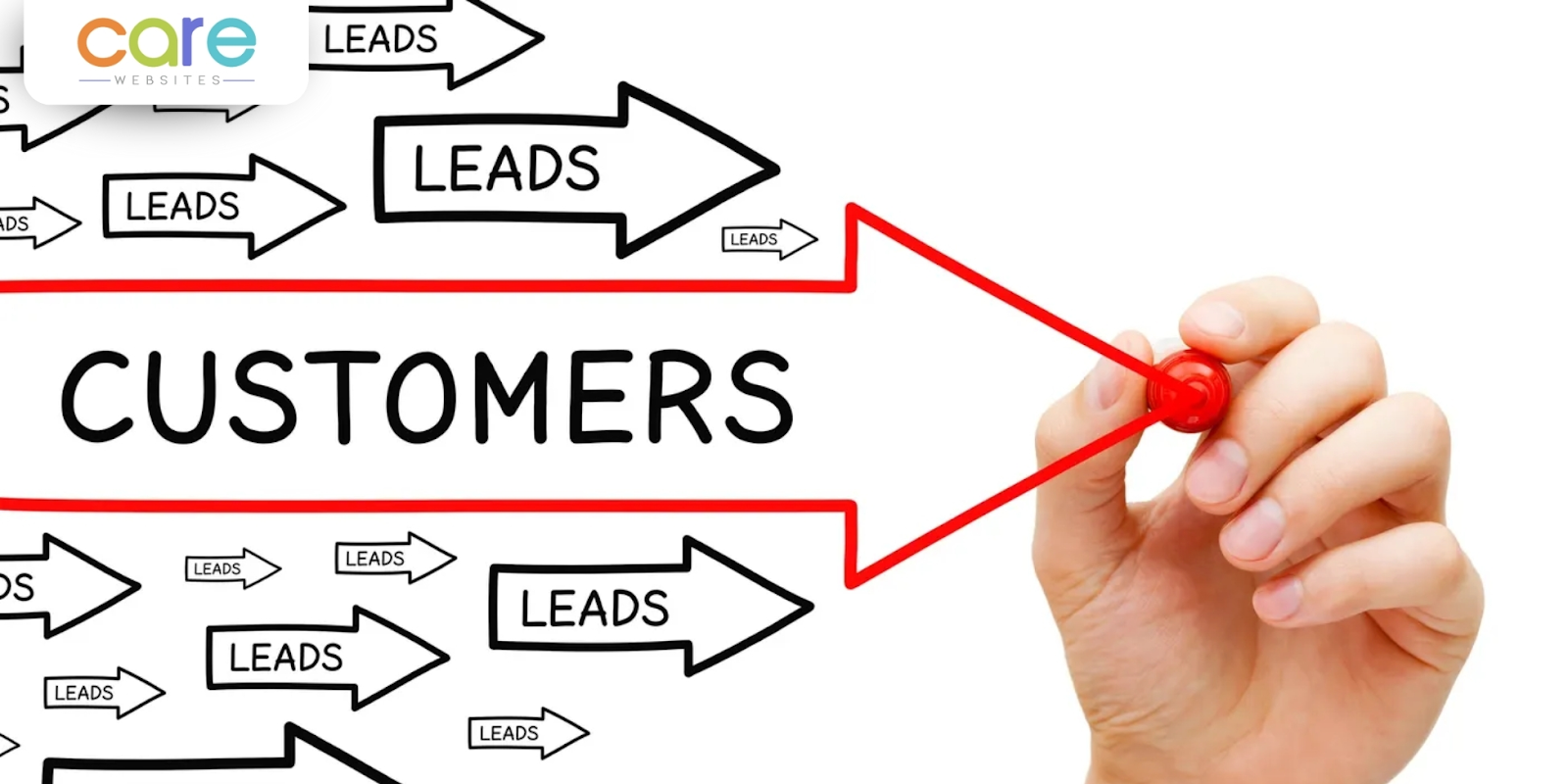When someone lands on your website, they aren’t just scrolling—they’re deciding. They’re weighing whether to trust you, learn more, and maybe, just maybe, take the next step. The question is: Is your website built to guide them confidently through that decision?
Many care-based businesses assume that just “having a website” is enough. But in reality, your website needs to do much more than exist—it needs to convert. And not just convert visitors into leads, but leads into loyal advocates and referrals. That’s where high-converting website funnels come into play. Let’s explore how thoughtful design, strong functionality, and seamless responsiveness work together to turn website traffic into a powerful referral engine.
Why First Impressions Begin with the Right Design Strategy
Before your visitors read a word or click a button, they’re already forming an opinion. That impression is based on how your site looks, how fast it loads, and how easy it is to navigate. A poorly designed site—even if packed with great information—can quickly lose the interest of potential clients.
Instead of randomly selecting a website template or guessing at colors and fonts, the design process should start with strategy. A good design balances four pillars:
- Visual creativity aligned with your brand
- Seamless user experience (UX)
- Functional features built for conversion
- Search engine visibility (SEO)
When these four elements align, you don’t just get a good-looking site—you get one that works. This is especially important for care organizations, where trust and clarity are non-negotiables.
Building with Purpose: From Mockups to Launch
Designing for results begins with clarity about your goals. Are you trying to generate inquiries? Increase bookings? Build trust before a consultation?
Once goals are clear, custom mockups are created to reflect your brand and speak directly to your audience’s needs. These aren’t just pretty pictures—they’re functional blueprints built with lead generation in mind.
Then, your site moves into development. Here’s where the design turns into a fully interactive experience. Front-end coding brings your mockups to life, and depending on your project’s scope, a Content Management System (CMS) may be integrated—often WordPress for its flexibility and user-friendliness.
The outcome? A website that not only looks great but also works like a digital sales funnel—welcoming visitors in, educating them, and guiding them toward action.
Why User Experience Is More Than Just “Good Design”
Let’s be real: people won’t fight to use your site. If it’s confusing, cluttered, or slow, they’ll bounce. That’s why every interaction—from the first scroll to the final click—needs to feel intuitive and friction-free.
A high-converting funnel doesn’t happen by accident. It’s the result of intentional UX design that focuses on:
- Easy navigation (no dead ends or endless menus)
- Clear, compelling calls to action
- Logical layout and content hierarchy
- Fast loading speeds on every device
The goal is to remove resistance. When users feel like everything “just works,” they stay longer, read more, and are more likely to refer others.
One Website, Every Device: Why Responsiveness Isn’t Optional
It’s not 2010 anymore—most people aren’t sitting at a desktop. They’re on phones, tablets, and sometimes multiple devices in a single day. If your website doesn’t adapt to fit all screen sizes, it’s pushing people away without you realizing it.
That’s why responsive design is critical. It ensures that:
- Pages resize and reflow content automatically
- Navigation remains smooth and clickable on any screen
- Load speeds are optimized regardless of connection strength
But there’s another layer: Google now penalizes websites that aren’t responsive. That means poor design not only hurts the user experience but can also bury you in search results.
The Case for WordPress: Flexible, Scalable, and Built to Grow with You
Your business isn’t static. Neither should your website be. You might want to update content, add blog posts, create landing pages, or highlight new services—and you shouldn’t need a developer for every tiny change.
That’s why WordPress is often the best choice. It’s not just a blogging platform—it’s a dynamic, open-source CMS that gives you full control over your site’s content and functionality.
With WordPress, you get:
- Easy-to-use dashboards and page editors
- Access to thousands of plugins for added features
- Full design customization to match your brand
- Scalability for future expansion or redesign
Whether you’re running a solo practice or a multi-location organization, a WordPress-based website gives you the tools to evolve and grow without starting from scratch.
Turning Visitors into Referrals: It’s All About the Funnel
Let’s zoom out. You’ve attracted traffic. Your site is visually appealing, responsive, and easy to use. But how do you actually turn those visitors into referrals?
Here’s how a high-converting funnel works:
- Capture interest
With clean design, service-focused headlines, and compelling visuals, you grab the visitor’s attention in the first few seconds. - Build trust
Strategic messaging, consistent branding, and helpful content reinforce that you understand their needs and can solve their problem. - Guide the next step
Clear calls to action—whether it’s “Schedule a Consultation” or “Download Our Guide”—make the next move obvious and easy. - Nurture leads
Not everyone converts immediately. Include simple forms or content downloads that allow you to follow up and stay in touch. - Encourage sharing and referrals
Add trust indicators like testimonials, review widgets, and referral prompts so clients are more likely to recommend you to others.
The secret? It’s not about getting more visitors—it’s about doing more with the ones you already have.
Mistakes That Derail Your Funnel (and How to Avoid Them)
Many organizations fall into common traps when building their site. Here’s what to avoid if you want real results:
Mistake #1: Treating your homepage like a brochure
Your homepage isn’t just a list of facts. It should be a conversion-driven entry point that leads visitors where you want them to go.
Mistake #2: Ignoring mobile experience
If your site isn’t responsive, users won’t stick around. You lose trust (and conversions) instantly.
Mistake #3: Overloading with options
Visitors shouldn’t feel overwhelmed. A single call to action per page is often more effective than multiple competing messages.
Mistake #4: Forgetting about SEO
Even the best website won’t work if no one can find it. Make sure your site is optimized to appear in search results for your niche.
Mistake #5: Leaving leads on the table
If your site doesn’t include forms, scheduling tools, or email opt-ins, you’re missing out on potential future business.
Avoiding these errors is just as important as following best practices—and it can mean the difference between a site that sits idle and one that actively grows your client base.
Final Thoughts: Great Websites Create Conversations—and Conversions
Your website isn’t just a marketing tool. Done right, it becomes a referral machine. Every page, every button, and every visual should be designed to build trust, create clarity, and move visitors closer to taking action.
That’s the power of a strategic, well-designed website funnel. It’s not magic—it’s intentional. And when you combine strong design, clear messaging, and responsive development, you create an online presence that turns clicks into conversations and conversations into referrals.
Want a Website That Naturally Converts Visitors into Referrals?
If you’re serious about making your website work for your care organization, there’s no better time to take action. With expertly crafted design, user-friendly functionality, and a clear lead-generation strategy, Care Websites can help you turn your traffic into loyal advocates. Let’s build something that not only looks good—but actually performs.
FAQs
Q: Why is a funnel-style website better for care organizations?
A: Because it’s built around user behavior. A funnel-style site guides visitors step-by-step toward action, rather than leaving them to figure out where to go next.
Q: Is WordPress secure and scalable for larger care groups?
A: Absolutely. With proper updates and security plugins, WordPress can support everything from solo practitioners to large multi-site networks.
Q: What’s the most important part of building a referral-generating website?
A: Clarity. Your site needs a clear path, consistent branding, and a focused message that solves a specific problem.
Q: How long does it take to build a fully functional care website?
A: That depends on the scope, but most high-quality sites take a few weeks from planning to launch. The goal isn’t speed—it’s strategy and quality.
Q: Do I need a separate mobile site?
A: Not with responsive design. A well-built responsive site adapts seamlessly to all devices—no need for a mobile-only version.








